A sloping yard indeed looks unique and can be maintained by the yard owner easily. But a sloping property that has a sloping yard would need a retaining wall to support and protect your yard from soil erosion or any other future damage.
As you realize, you need a retaining wall for your backyard; you may try to find various ways to build a retaining wall.
There are several retaining wall ideas to build a retaining wall by yourself without needing to hire a constructor.
However, a professional may better help you build a retaining wall, but you can also perform it by yourself just by following the steps mentioned in this blog.
Let us get started!
1. Choose the Material of Blocks
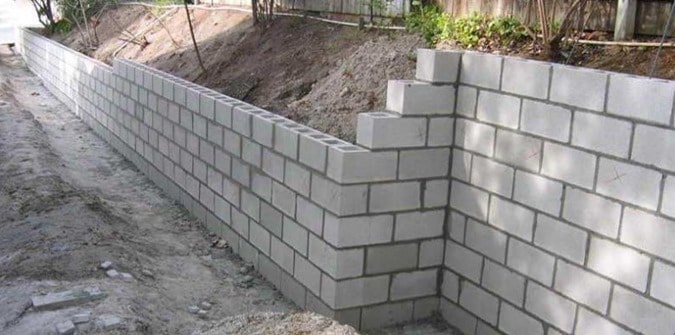
The first choice you would need to make is choosing the material for the block you will be using to build the retaining walls. The material that you choose should be strong enough to support your yard effectively. There are several materials for the blocks; you can choose from natural stones or wooden blocks to build a retaining wall.
Other good choices for retaining blocks are cement, interlocking, and landscaping blocks, as these are strong and sturdy for retaining walls. If you are building a retaining wall for the first and need a retaining wall with a shorter height, then interlocking blocks are the best choice.
Cement blocks are comparatively less expensive than other blocks, and they are great for regions with heavy rainfall as they can be reinforced with rebar. Landscaping blocks are elementary to install, and they are great for smaller yards while they are on the expensive side when compared with other blocks.
2. Plan the Process
Examine the area where you wish to build the retaining wall and determine the height of the retaining wall you wish to see in your yard. It is essential to plan the process of building the retaining wall.
To mark a straight wall, try to mark the entire bed using a marking point or a string. In the case of a curve wall, use a rope to mark the outline of the wall. Examine the area and determine the type of soil and not for any drainage patterns. If the slope surface of your yard is advanced, you may require hiring a professional to build the wall.
3. Calculate Your Material
The next step is to calculate the materials you would need to build the wall and remember to add extra 10% material to cover extra blocks. To calculate, determine the number of blocks you would require and divide the total length of the retaining wall by the length of the block.
Example- If the wall if 10 feet in height and 6 inches wide, a block is 6 inches long and wide, you will need 20 blocks for one course.
4. Start the Process of Digging

Now that you have planned and determined the area where you will be building the wall, it is the time when you start digging the trench to build the foundation. Dig the trench to twice the width of the thickness of the wall. For a 2 feet long trench, you would need to dig about 6 inches deep.
5. Tamp Down the Dirt
To form the foundation of your retaining wall, the next step is to tamp down the dirt. Clay soil will require more retention than sandy soil, so the clap soil should be well-compacted.
Now tamp the dirt down until the soil is completely compacted with the use of a hand tamper or a vibrating compacter. Then lay the gravel or crushed stones in the trench and tamp everything down.
6. Start Placing the First Layer
Now, place the first layer of stones on the trench that you created, be assured that your first layer is placed properly, so take your time to place the first layer. Make sure every block fits together and is strong enough to hold the wall.
7. Complete the Next Layers
Now that you have placed the first layer of the block, place the next set of blocks too. Remember to sweep off the excess dirt to ensure that the surface is clean to place other blocks. You can also add cement mix to place other block layers to make it stable and sturdy that lasts longer.
8. Install Drainage

As you place a few layers of blocks, you need to put the drainage system to allow the water to flow. Add the drainage right behind the blocks and then continue to add the blocks.
Why Retaining Wall is Important?
Retaining walls are essential for all types of yards but precisely for yards with sloping surfaces. Retaining walls are tried and tested way to support plants of a hilly yard, build gardens, and keep the dirt and excess water away from your yard.
The various benefits of building a retaining wall for your backyard include reduced soil erosion, raised beds, adds structure to the landscape, and adds value to the porch or patio.
It is a Wrap!
Once you follow all the steps, you would need to backfill the wall with sand or gravel, and you are all done with building your wall.
The process of building the retaining wall might seem challenging but once you start building, make sure you end it. The process will help you build a strong and sturdy retaining wall.


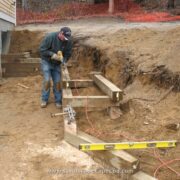
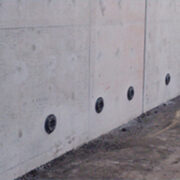
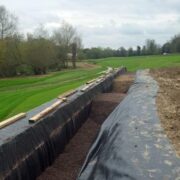

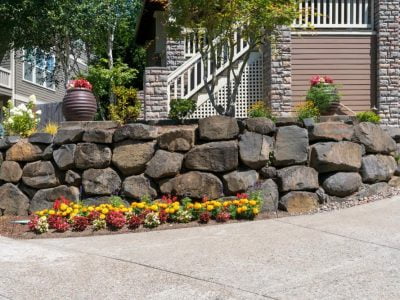

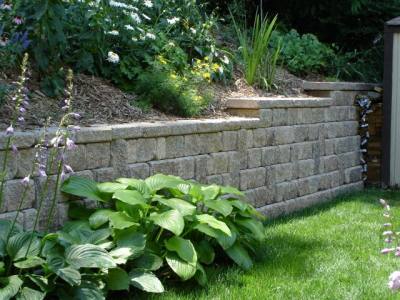
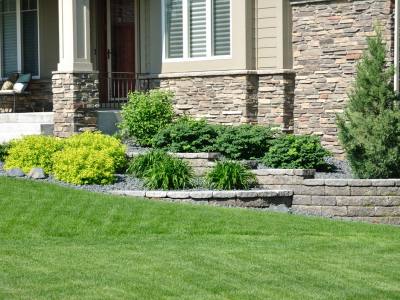
Comments